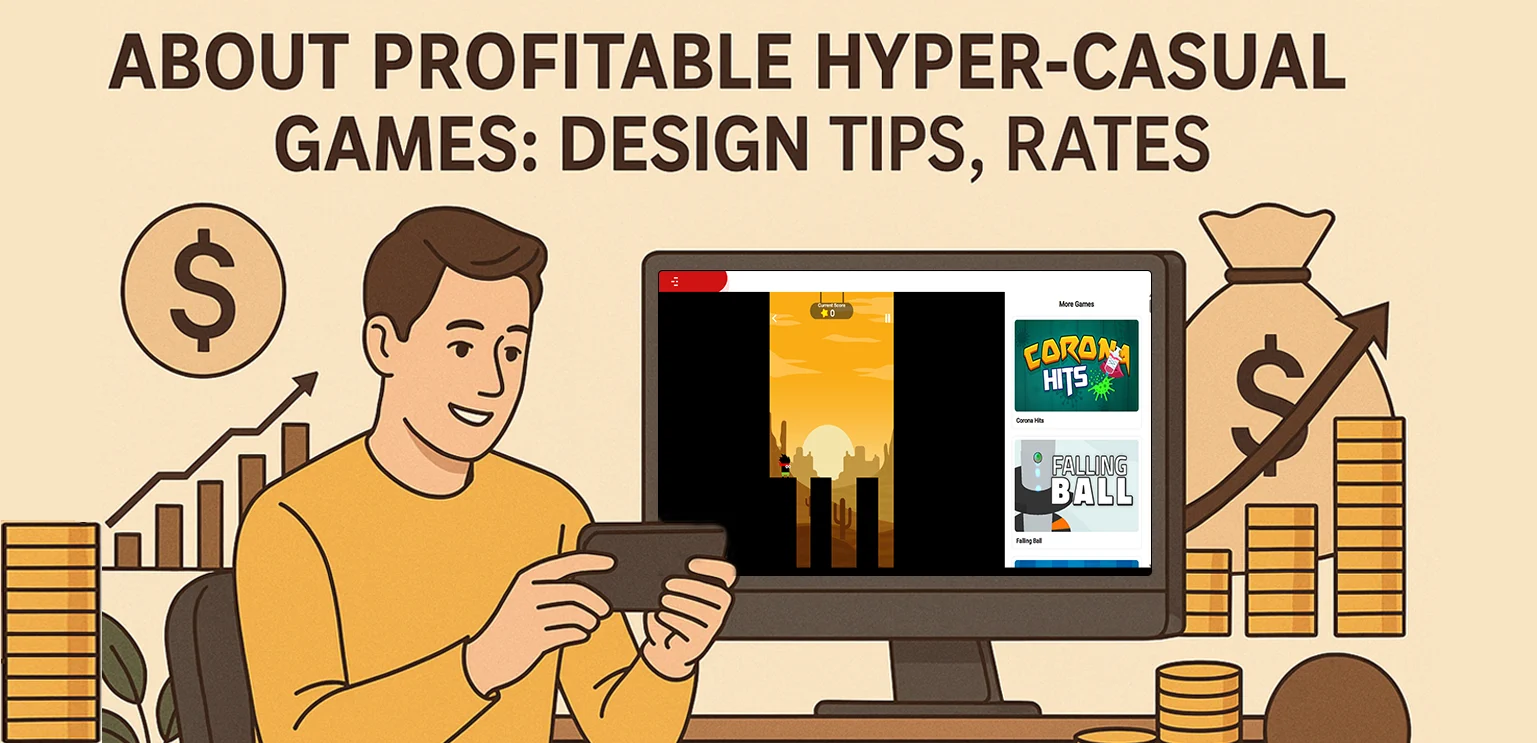Profitable Hyper-Casual Games in 2025: Tips & Trends
Imagine you're on your way to work, scrolling through your phone, and you tap on a game to pass the time. It's simple—just a tap here, a swipe there—but it's incredibly engaging. Before you know it, you've spent 15 minutes immersed in this straightforward yet addictive game. This is the magic of hyper-casual games.
At Gamix Labs, we've witnessed firsthand how these seemingly simple games can captivate millions and generate substantial revenue. Let's delve into what makes hyper-casual games profitable and explore the design tips, cost considerations, and trends shaping this genre in 2025.

Competitor Analysis: Identifying the Gaps
Upon reviewing top-ranking articles on hyper-casual game profitability, several commonalities emerge:
- General Overviews: Many provide broad definitions without actionable insights.
- Lack of Real-World Examples: Few articles cite specific games or case studies.
- Outdated Trends: Some fail to incorporate the latest developments in the industry.
Our goal is to bridge these gaps by offering a comprehensive, up-to-date guide enriched with practical examples and insights.
Design Tips for Profitable Hyper-Casual Games
🔹 Simplicity is Key
Hyper-casual games thrive on straightforward mechanics. Think of games like Flappy Bird or 2048—easy to learn but hard to master. The goal is to create an experience that players can jump into without tutorials.
🔹 Engaging Core Loop
The core gameplay loop should be addictive. In Stack, for example, the satisfaction of perfectly aligning blocks keeps players returning. A compelling loop encourages repeated play sessions.
🔹 Visual Appeal
Clean, colorful visuals instantly grab attention—even in a sea of other apps. Games like Color Switch use bright colors and simple designs to attract users. Eye-catching visuals and clean design are key to keeping players engaged and coming back.
🔹 Short Session Lengths
Design games that can be played in brief sessions. This caters to users looking for quick entertainment during short breaks.
🔹 Iterative Development
Release a minimum viable product (MVP) and gather user feedback. Use this data to make informed updates, ensuring the game evolves based on player preferences.
Development Costs and Monetization Strategies
Development Costs
Creating a hyper-casual game can vary in cost depending on complexity and features.
🔹 Monetization Techniques
- In-App Advertisements (IAA): The primary revenue source, including banner ads, interstitials, and rewarded videos.
- In-App Purchases (IAP): Offering cosmetic items or power-ups for purchase.
- Hybrid Monetization: Combining IAA and IAP to maximize revenue streams.
Upcoming Trends for 2025
🔹 Rise of Hybrid-Casual Games
That's the magic of good design.
Now, imagine that same game not only being easy to play but also offering layers of challenge the more you explore.
That’s the sweet spot hybrid-casual games are hitting — combining the quick fun of hyper-casual titles with deeper gameplay that keeps players coming back.
🔹 Integration of Meta Layers
Adding progression systems, character customization, and narratives enhances player engagement and monetization opportunities.
🔹 Leveraging Social Media Trends
Platforms like TikTok influence game virality. Games that tap into trending topics or challenges can experience rapid growth.
🔹 Adoption of Emerging Technologies
Incorporating technologies like augmented reality (AR) and artificial intelligence (AI) can offer unique gameplay experiences and personalization.
Gamix Labs: Your Partner in Hyper-Casual Game Development
At Gamix Labs, we specialize in crafting engaging hyper-casual games that resonate with players. Our team stays abreast of industry trends to ensure your game not only entertains but also achieves commercial success. From concept to launch, we're here to guide you every step of the way.
Conclusion
The hyper-casual genre remains one of the most profitable and fast-growing areas in mobile gaming. By focusing on simple yet engaging designs, understanding monetization strategies, and staying ahead of emerging trends, developers can create games that captivate audiences and generate substantial revenue.
Partnering with experienced teams like Gamix Labs can further enhance your game's potential in this dynamic market.
What makes hyper-casual games profitable in 2025?
Simple controls, a tight “tap-reward-repeat” loop, short sessions, and clean visuals help hyper-casual games hook players fast. Pair that with rapid A/B testing, quick updates, and smart user acquisition, and you get low friction, high reach, and solid ad revenue.
Hyper-casual vs. hybrid-casual: which should I build?
Hyper-casual is all about instant fun and scale; hybrid-casual keeps the easy entry but adds meta layers (progression, cosmetics, light narrative) to lift retention and LTV. If you want deeper revenue per user in 2025, hybrid-casual often wins—without losing that pick-up-and-play feel.
What design tips actually move the needle?
Keep one clear goal, one gesture, and one-screen clarity. Make the core loop satisfying (snappy feedback, rising challenge, quick replays). Use bright, readable art, and ship an MVP early—then iterate from player data, not guesswork.
How do hyper-casual games make money without hurting retention?
Lead with ads (rewarded videos, light interstitials) and tune frequency to avoid fatigue. Add optional IAPs (skins, continues, ad-free) for a hybrid model. Keep rewards meaningful and skippable so players feel in control—engagement first, monetization second.
What trends should I plan for in 2025?
Expect hybrid-casual depth, social virality via TikTok/Reels, and meta systems that stretch playtime. AI will personalize difficulty and offers; AR experiments and live events can spark spikes. Build for quick tests, fast content drops, and creator-friendly moments to fuel organic growth.